Garlic Mustard (Alliaria petiolata) Image source: James Lin Brassicaceae family (mustard family)Biennial plant - plant normally requires two seasons to complete its life cycle
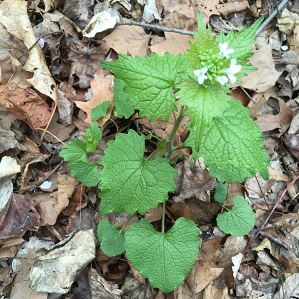
This April we have been busy working on removing the invasive plant Lesser Celandine also known as fig buttercup at parks neer the College Park Sierra Club office - Magruder Woods, Cherry Hill Park and Little Paint Branch Park with local community service volunteers, stewardship interns, and park rangers hand removing with shovels to get the bulbs out. We have removed commingled english ivy, garlic mustard, japanese and bush honeysuckle, periwinkle, oriental bittersweet, trifoliate orange, japanese barberry, and ground ivy.
In May we are focusing on garlic mustard (Alliaria petiolata) a non-native invasive herb originating from Europe and parts of Asia found in the undergrowth of woodlands and forest edges. Garlic mustard has the ability to establish and spread even in pristine areas because of its taproot. It has a biennial life cycle taking two years to fully mature and produce seeds. In the first year, garlic mustard forms a basal flower rosette, and in its second year produces small white flowers and seeds.
There is hope! Deirdre Lally, Western MD Organizer, reports that at the recent Western MD Native Plant society weed pull at Bull run, Virginia white butterfly (Pieris virginiensis) endangered by garlic mustard poisonous to caterpillars, fluttered by, and the garlic mustard was largely gone due to previous years efforts.
Join us at local parks on weekdays and weekends to help remove garlic mustard. Find events here https://www.sierraclub.org/maryland/calendar or contact stewardship.outings@mdsierra.org or the College Park office 301-277-7111 Tools and guidance will be provided. Find more weed pulls around the state here: www.sierraclub.org/maryland/invasive-plant-removal-outings
Garlic mustard's life cycle, a butterfly it threatens, and recipes for cooking it below
The first year seedlings put out small green leaves close to the ground. In the second year a flowering stem grows 2 to 3½ feet tall, sporting triangular or heart-shaped leaves with scalloped edges. At the top of the stem numerous small white flowers grow, each with four delicate white petals. Each flower develops a long slender pod containing 12 to 16 tiny black seeds. The entire plant has the pungent odor of garlic when crushed. THe plant has rough, scalloped leaves (kidney, heart, or arrow-shaped), recognizable by the smell of garlic and taste of mustard when its leaves are crushed. (The odor fades by fall.)
Garlic mustard threatens the West Virginia White Butterfly
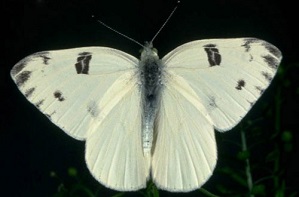 West Virginia White butterfly/Caterpillars- chokes out native wildflowers, such as toothwort, the host plant for the caterpillar of
West Virginia White butterfly/Caterpillars- chokes out native wildflowers, such as toothwort, the host plant for the caterpillar of
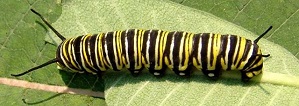
the West Virginia White butterfly. West Virginia Whites mistake garlic mustard for toothwort and lay their eggs on it. It is believed the strong mustard oils kill the caterpillars.
Spreads rapidly on forest edges and understory, where it can crowd out native wildflowers and tree seedlings. Overbrowsing on native plants by deer herds can increase risk to native ecosystems
Life cycle
Habitat: Moist, shaded soil of floodplains, forests, roadsides, edges of woods, and forest openings. Often dominant in disturbed areas.
Description: Biennial herb. First-year plant has a rosette of green leaves close to the ground. Second-year flowering plants 2 to 3 feet in height with small white flowers, sporting triangular or heart-shaped leaves with scalloped edges. Four petals in the shape of a cross. Coarsely toothed leaves have odor of garlic when crushed. At the top of the stem numerous small white flowers grow, each with four delicate white petals. Each flower develops a long slender pod containing 12 to 16 tiny black seeds. Leaves are dark green, coarsely toothed, and deeply veined. All parts of the plant have a pungent odor of garlic, though less so towards fall. The basal rosettes stay green all year, even under snow.
Reproduction is entirely by seed, and each plant produces about 350 seeds, which means about 100,000 seeds per square foot. Its spread in the East has been exponential, nearly 4000 sq mi per year, making it the dominant understory species in woodland and floodplain habitats, where eradication is most difficult.
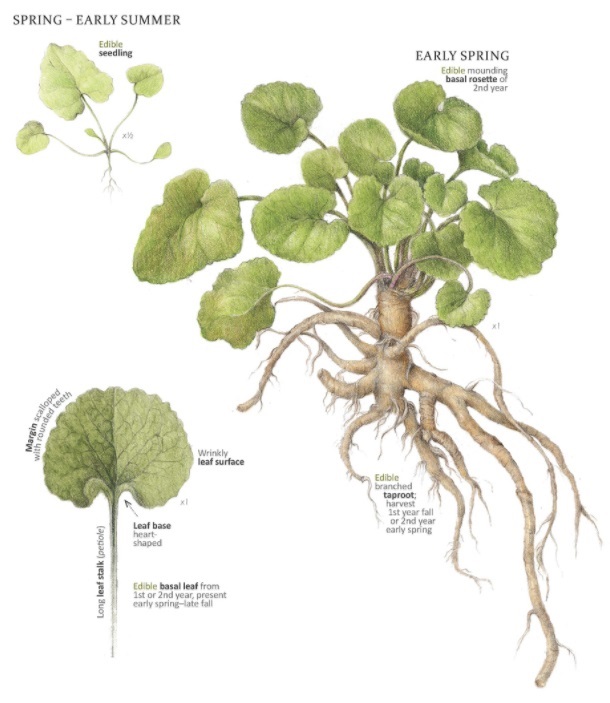
Hand Pull Garlic Mustard
Pull garlic mustard before it flowers in spring, removing crown and roots. Tamp down soil afterwards. Once it has flowered, cut, being careful not to scatter seed, then bag and burn or send to the landfill.
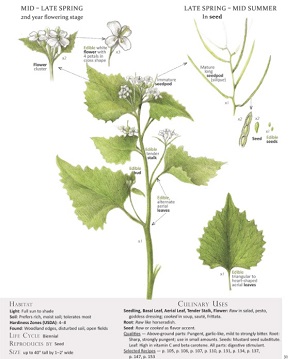 History of garlic mustard?
History of garlic mustard?
Native range: Europe, Asia, Northwest Africa
Invasive range: Much of the Lower 48, Alaska, and Canada.
Garlic mustard originated in Europe and was introduced to North America in the 1860s as a culinary and medicinal herb. After a century of behaving itself in gardens, the European herb began to turn up in woodlands and along shaded waysides. There was no cause for alarm when its numbers were sparse. But after a century of low-profile living, garlic mustard eventually found an ecological niche in our woodlands, and it took off. In fact, it exploded.
In 1868, it was recorded “outside cultivation” on Long Island, flourishing in what field guides call “disturbed ground”: the edges of roads, railroads, trails, fields, and abandoned lots. From there, like most invaders, once it establishes in a new location, it invades undisturbed plant communities and becomes the dominant species. The insects that feed on it in the Old World aren’t present in the New. Because white-tailed deer rarely feed on garlic mustard, they may encourage it by consuming native plants instead, and their trampling as they browse disturbs the soil, encouraging invasive seeds—which can germinate up to five years after being produced—to grow. Its roots inhibit the growth of some below-ground fungi that many native plants require, reducing the ability of tree seedlings to survive in a sea of garlic mustard. Somewhat surprisingly, researchers have found that invaded areas have a greater diversity of fungi, perhaps because the dominant ones disappeared.
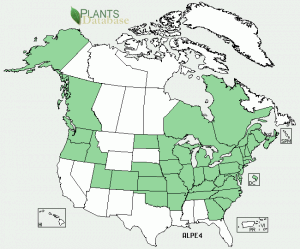
Garlic mustard has headed west from the northeastern coast, taking the eastern and midwestern US, crossing into Canada, mounting incursions into western states, including the Pacific Northwest.
Recipes
Every part of the plant is edible, and it's available year-round, and, due to it's invasive nature, gathering as much of it as you want actually helps, rather than hurts, the environment. The root, which can also be eaten all 4 seasons, if the ground isn't frozen, has a pungent, horseradish flavor, especially when mixed with white vinegar
Garlic mustard leaves are great on tuna fish or tempeh sandwiches.
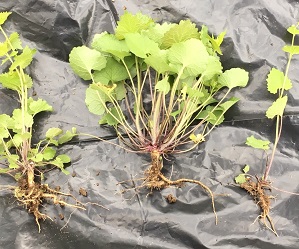 Pesto - blanched garlic mustard leaves, olive oil and cheese in a food processor. Ingredients like pine nuts or even hazelnuts can be added, but they are optional. Since garlic mustard is so pungent, using a strong cheese such as asiago or even swiss can help.
Pesto - blanched garlic mustard leaves, olive oil and cheese in a food processor. Ingredients like pine nuts or even hazelnuts can be added, but they are optional. Since garlic mustard is so pungent, using a strong cheese such as asiago or even swiss can help.
Clean the garlic mustard by soaking the leaves in a bowl of water before drying them off. I then blended them in a food processor with extra virgin olive oil, walnuts, salt and pepper, and a teaspoon of apple vinegar.
-
2 oz (by weight) hard grating cheese such as Pecorino Romano or Parmigiano, cut into chunks (fills about ½ cup)
-
½ cup nut or seed (preferably soaked and dried, see earlier blog post here); some good choices are sunflower seeds, green pumpkin seeds, hazelnuts, almonds, pecans, and pine nuts
-
1–2 cloves garlic (less garlic is used than typical pesto recipes so you can taste the flavor of the herbs)
-
3 cups packed wild greens (edible raw) of choice; if leaves are large, coarsely chop
-
1/3–3/4 cup cold-pressed olive oil
-
Sea salt to taste
-
Place cheese in food processor and process until well pulverized.
-
Add nut or seed and garlic and process until medium-fine ground.
-
Add wild greens and process until mixture is well minced.
-
With food processor running, add olive oil until the desired consistency is reached. 1/3 cup oil produces a thicker consistency — nice for spreading on bread, crackers, etc. For a thinner, looser sauce add another ¼–½ cup of oil.
-
Taste first, then add salt if desired.
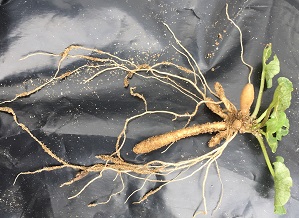
Salads -Raw garlic mustard leaves have a much stronger flavor than the blanched ones, so start small. You would also definitely want to use second-year plants from deep shade here. But garlic mustard can enhance almost any salad type, if you use the right proportions. Basically, if you are using mild greens (like iceberg or romaine lettuce), you can add about 25% garlic mustard leaves. If you are using greens that already have strongly bitter flavors, like kale or mustard greens, consider only adding about 15% garlic mustard. On the other hand, if you are using strongly-flavored greens, like parsley in a tabbouleh, they will balance out well with an equal amount (50%) garlic mustard.
A special note
Garlic mustard contains cyanide. Many of our cultivated vegetables, including broccoli and broccoli rabe (both related to garlic mustard) also have trace amounts of cyanide. Garlic mustard has been used as a vegetable in Europe for centuries, and here in America for decades. Most people agree that the amounts of cyanide are negligible for a human, our livers do a great job of filtering it out. However, just to be on the safe side, one should limit themselves to no more than 2 dishes a week. It's also worth noting that cyanide is water-soluble, so blanching or soaking the leaves (if you want to use them raw) will reduce concentrations.
Wash the leaves. Young plants, with their mild mustard-garlic flavor, can be used raw in salads. Cooked, the flavor’s even more subtle. Older leaves, fresh or dried, come through stronger, tending toward bitter, and are great in soups, marinades and dry rubs, especially with meat. If the plant is in full flower or has produced seeds, it will be more bitter.
Make sure there’s no poison ivy growing in with the garlic mustard. Make sure you have the right plant—the rough-toothed leaves and garlic odor when crushed are giveaways—then pull it up by the roots. Don’t scatter any seed as you bag up the whole thing. The roots will keep it fresh until you’re ready to cook. Then cut off the leaves, and discard the stalk and roots in a sealed bag for disposal. Do not plant or compost!
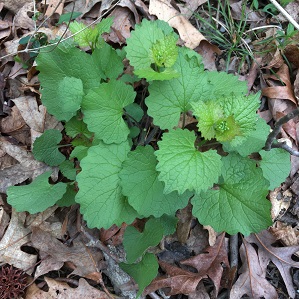
Works Cited
http://foragedfoodie.blogspot.com/2013/05/why-you-should-forage-eat-garlic.html
http://eattheinvaders.org/garlic-mustard/
http://www.botanicalartspress.com/blog/2015/4/18/garlic-mustard-root-horseradish
http://www.bioone.org/doi/abs/10.1614/IPSM-D-11-00025.1
http://www.dailyherald.com/article/20120428/news/704289880/
also see
https://www.sierraclub.org/maryland/blog/2016/07/battling-weeds-protecting-our-native-forests
Submitted by Marc Imlay, Sierra Club MD Biodiversity Chair and James Lin, Sierra Club MD Communications and Stewardship Outings Intern Spring 2018